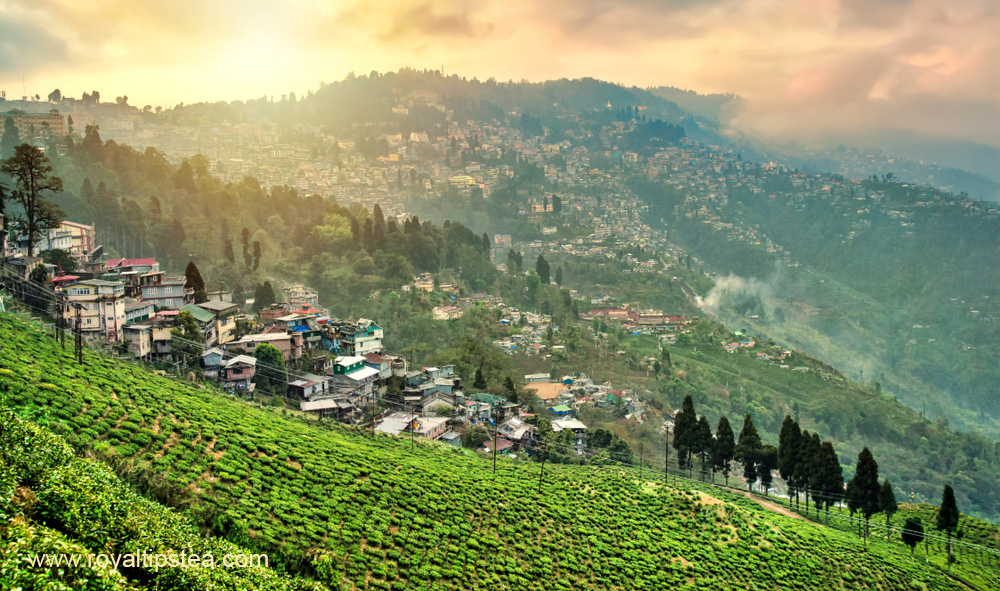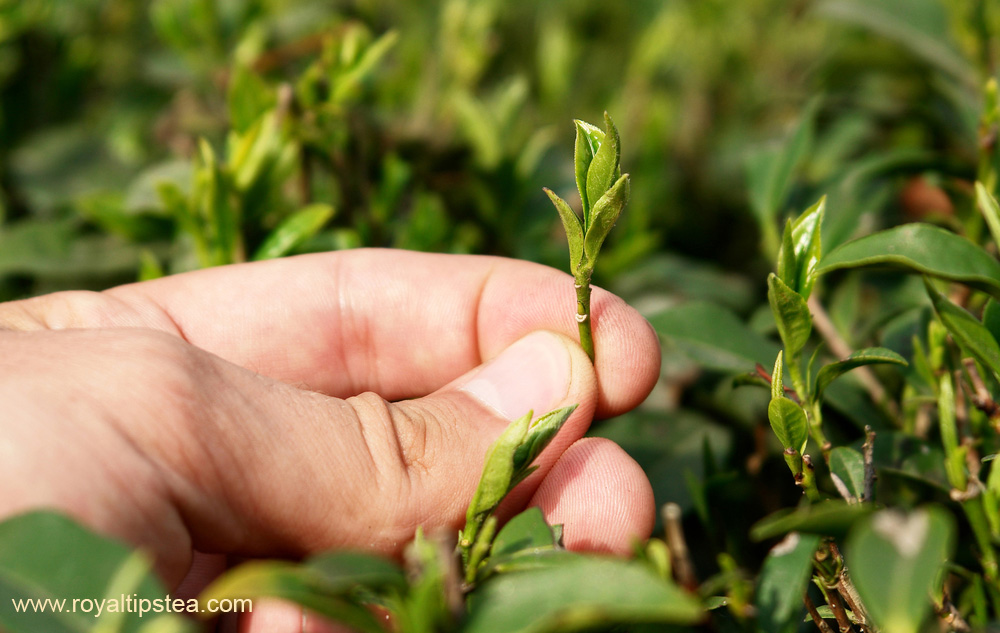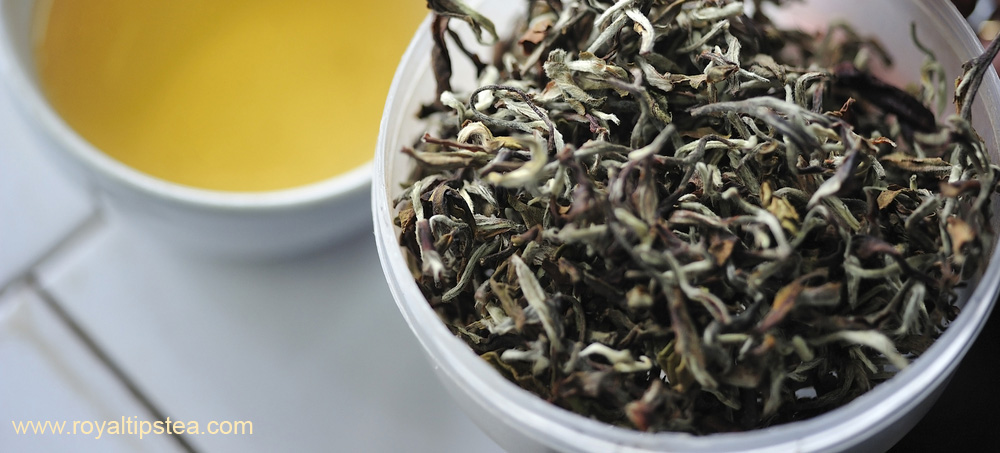The post What is Darjeeling tea: types and flavours first appeared on Blog Royal Tips.
]]>Whereas Assam is very flat and low lying, the hills of Darjeeling rise to an altitude of 2,133.6 metres (7,000 feet), and tea grows on the steep slopes from approximately 609.6 metres (2,000 feet) up to the very highest peaks. There are around 80 tea gardens in the region, although the exact number changes all the time as gardens go out of production, or split up, or amalgamate neighbouring estates. Most estates have their own factory and a village for the workers who pick and process the tea. There are also clinics and hospitals, creches, junior schools, places of worship, community centres, and shops. Several estates also offer accommodation for tourists or potential buyers who visit each year to buy teas for their business.

The flavours of Darjeeling tea
The flavours of Darjeeling teas can vary for several reasons.
The first is the way in which the seasons, climate and weather patterns change during the growing period from spring through to autumn.
The second is the altitude of the gardens, for the highest altitudes will always have an advantage over the lower elevations in terms of the quality and flavour of the teas.
The third is the type or types of tea plants growing on each individual estate.
- Some gardens have very old bushes that were grown from seed in the 1850s when the region was developed for commercial production. These seed-grown plants are all slightly different, grow at slightly different speeds, yield different amounts of leaf shoots and buds, and bring valuable diversity to the flavour of the teas plucked from them.
- Some gardens have plants that have been grown more recently by Vegetative Propagation (VP), which creates new plants from leaf cuttings taken from a carefully selected mother bush. Each of those new cloned plants is an exact copy of the mother plant, so the bushes will all grow at the same rate, flush at the same time and give the same flavour and aroma characteristics to the tea made from them. The estate manager therefore knows exactly what to expect from his plants.
- Some gardens have a mixture of both seed grown and clonal plants.
Of the three factors that affect the quality and flavour profile of Darjeeling teas, the one with the most influence is the changing of the seasons and the weather conditions that prevail at different times of the year. Because of climate change, traditional weather patterns have been shifting in recent years and are much less predictable that in earlier times.
There are four main harvesting periods in Darjeeling: early spring; late spring into early summer, midsummer; and autumn. In the winter months, the tea bushes go into a period of dormancy and do not start producing new leaf shoots again until the following spring.

Darjeeling First Flush
In spring, from late March and into April, the First Flush teas are picked and, because the weather is still cool and rather dry, the tea plants produce tiny new leaf buds and baby leaves which grow very slowly. These rather stressful conditions may be harsh for the plant but allow the tea leaves to develop delicate but complex layers of flavour and aroma. These teas are often described as having a ‘muscatel’ character, meaning they often smell and taste a little like muscat grapes, which are famous for their sweet and aromatic floral and fruity notes.
However, in the past 30 years or so, Darjeeling first flush teas have gradually become rather green in both colour and flavour profile and, if not brewed carefully, can taste rather grassy, astringent and slightly bitter. The increasing demand for greener First Flush teas has come from Japan (and from the wholesalers in Germany who sell these teas into Japan),and Darjeeling factory managers have tweaked the black tea processing method to please those buyers.
The production of traditional First Flush
To make traditional black teas which have dark brown leaves, the freshly picked leaf is brought into the factory and is allowed to wither (to reduce the water content of the leaves) until approximately 30 – 35% of the water has been evaporated. This makes the tea much easier to manipulate during the next stages of the processing.
To make greener First Flush teas, the tea leaves go through what is called a ‘hard wither’, which removes 65 – 70% of the leaves’ water content (double the percentage lost in a traditional wither). For oxidation to take place in the leaves, there must be oxygen in the air, enzymes in the tea and water in the leaves, and the reduction of water remaining in the leaves after a hard wither makes it much more difficult for the tea to ‘oxidise’ and turn dark brown. The best teas still have suggestions of stone fruits such as peaches and apricots, but most are often rather crisp and grassy.
Darjeeling Second Flush
Darjeeling Second Flush teas are harvested and processed in May and June, when the weather is warmer and rainfall increases. These teas are fully oxidised and so look and taste very different from the greener First Flush. They are a rich woody brown and have more of the expected muscatel character mingled with fruity sweetness and slightly toasty notes.

Third Flush
The third harvest from late June through to late August, early September, is known as the ‘monsoon flush’. It rains almost incessantly during this period and, because there is so much water in the air, in the soil and in the tea leaves, the quality of the tea drops to give a very plain and rather uninteresting brew.
The teas are fully oxidised and so look very similar to the Second Flush teas but instead of being sold as single origin Darjeelings, they are often used in blends.
Autumnal Darjeeling harvest
The autumnal harvest is picked from late October to November when the rains and the sun’s warmth gradually decrease. The slower growth of the bushes results in teas that brew full bodied liquors with rich fruity flavours and hints of sweet grapes and ripe berries. For some tea lovers, this is their favourite season for Darjeeling teas.
The post What is Darjeeling tea: types and flavours first appeared on Blog Royal Tips.
]]>